Alabama’s many waterways are perfect habitats to see the bald eagles that live in the state. There is plenty of open space and lots of their preferred food — fish. This raptor is the biggest eagle in North America and the United States national bird. Their wingspan can reach 96 inches and weigh up to 14 pounds.
Although they’re big and beautiful, their call is less than impressive. It’s more of a high-pitched rapid-fire squeak. Regardless, they are an awe-inspiring sight. Read on to discover when and where you’re most likely to spot bald eagles in Alabama.
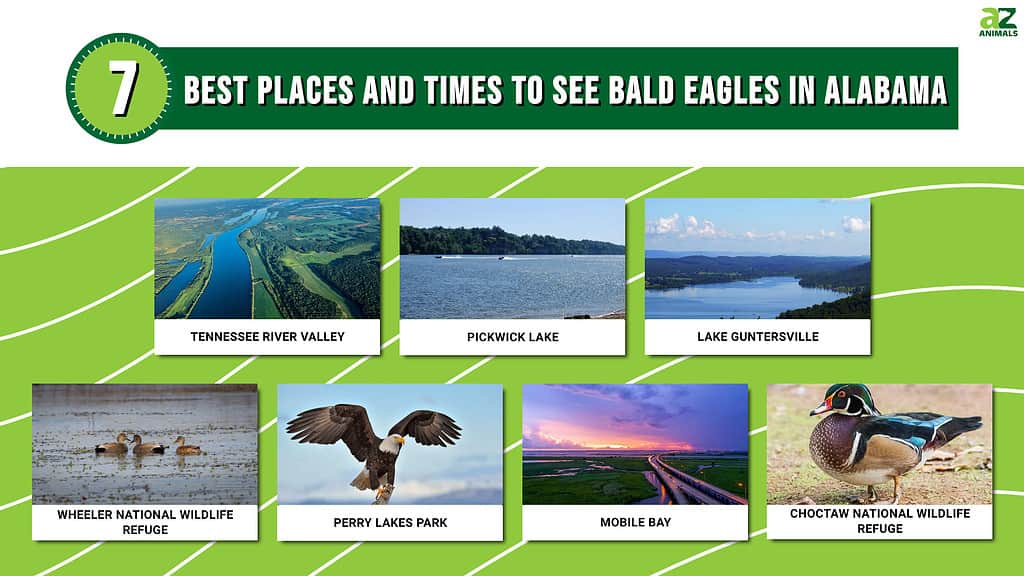
When You’re Most Likely to See a Bald Eagle in Alabama
Bald eagles occur statewide all year long because some pairs do not migrate. So they can be seen year-round. However, many more make the trek from Canadian breeding grounds to warmer southern locales during the cooler months, making October through March prime bald eagle sighting season.
Plus, with more than 200 resident nesting pairs statewide, the bald eagle’s status is more secure than ever. While it’s still protected, the bald eagle is no longer on the endangered list, thanks to years of conservation efforts.
Tennessee River Valley
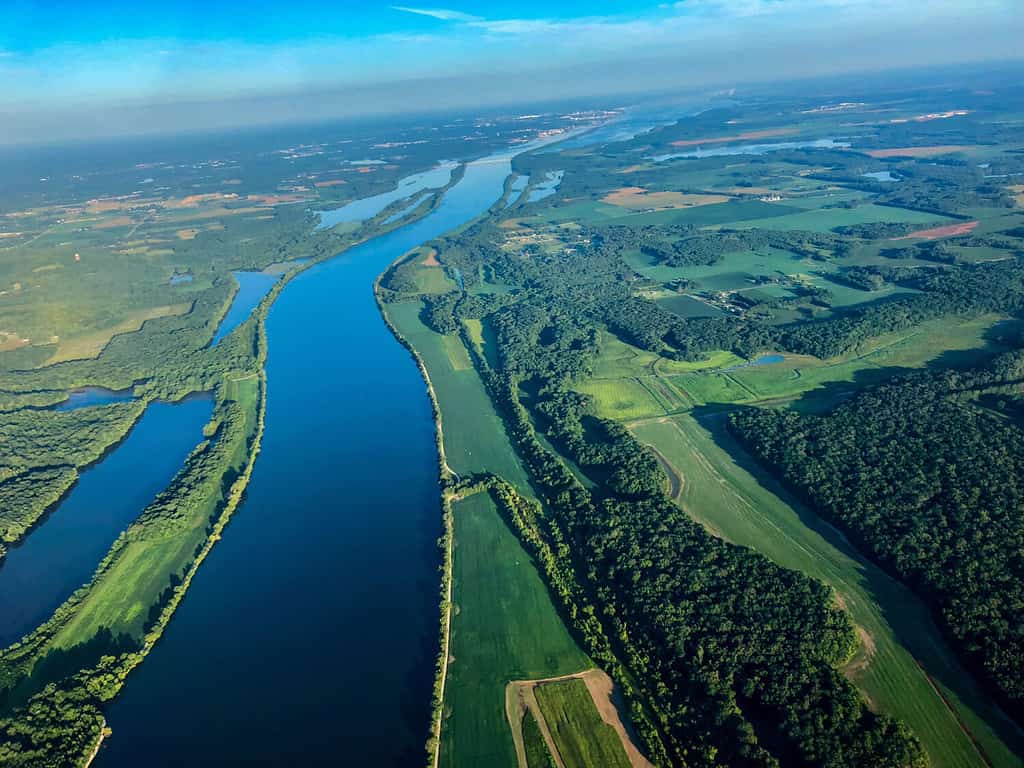
The Tennessee River Valley encompasses hundreds of miles of waterway, some have more bald eagles than others.
©Dharris324/Shutterstock.com
Bald eagles can be seen throughout the Tennessee River Valley, which includes Pickwick Lake, Lake Guntersville, and Wheeler National Wildlife Refuge. The region’s rich ecologic diversity supports thousands of species and most of Alabama’s bald eagles are seen somewhere along the Tennessee River Valley.
Pickwick Lake
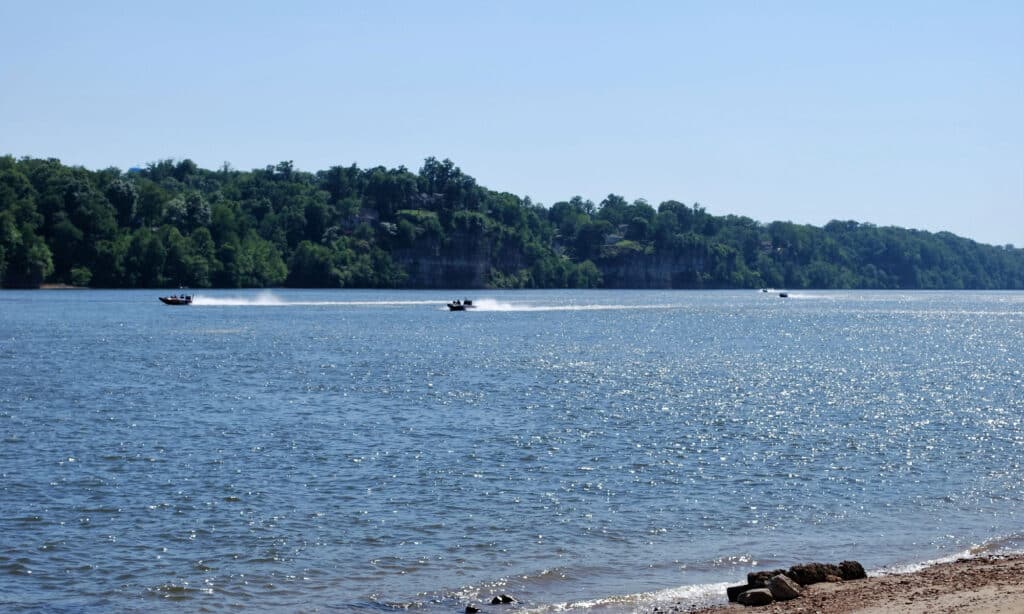
Pickwick lake is in northwestern Alabama and is host to a solid year-round bald eagle population.
©unageo09/Shutterstock.com
According to the Alabama Department of Conservation and Natural Resources, Pickwick Lake has a sizable bald eagle population.
The reservoir is along the Tennessee River, located in the northwest corner of Alabama. It is popular with water sports enthusiasts and nature lovers. It’s located in three different states — Alabama, Tennessee, and Mississippi, and provides hydroelectric energy to residents in the region.
Lake Guntersville
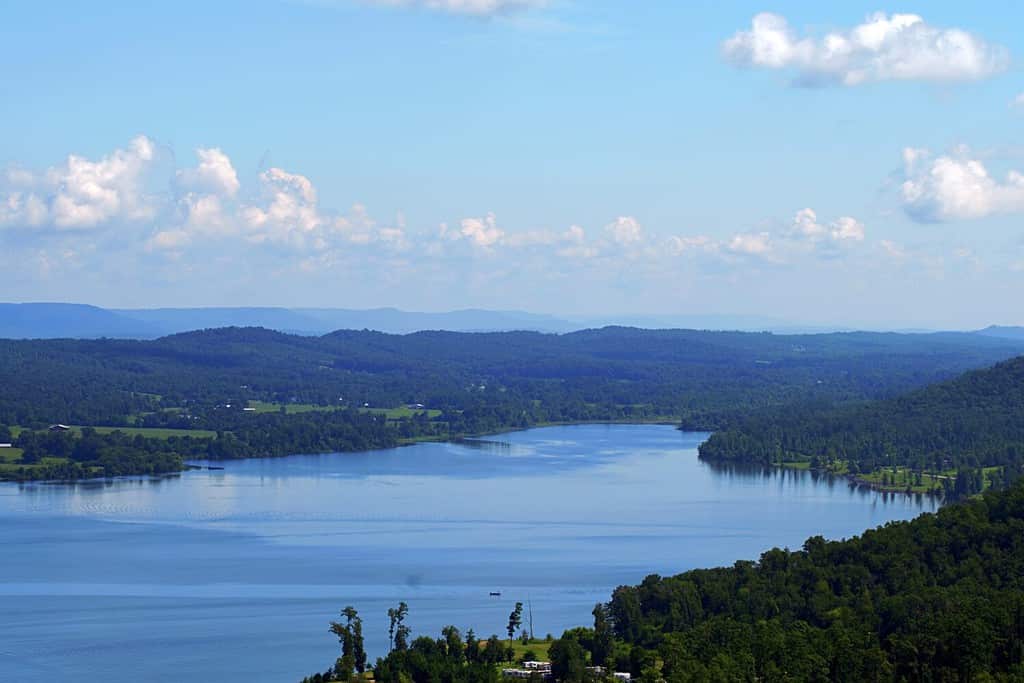
With wide open water, Lake Guntersville in northern Alabama is prime bald eagle habitat.
©Dharris324/Shutterstock.com
Located in northern Alabama, Lake Guntersville offers camping, fishing, boating, and more. When conservation groups began the practice of hacking, the first eagle that took flight from one of the hacking towers was at Lake Guntersville in 1985.
Hacking is a practice that transplants eaglets from other locations into artificial nests in areas where eagles are being reintroduced. They place often captive-hatched or orphaned eaglets into the nests where they are still cared for and protected until they leave on their own. Timing the transplant is crucial. They must be moved before the eaglets begin looking down out of the nest. The principle works because eagles typically live within 75 miles of their original home nest.
Wheeler National Wildlife Refuge

When bald eagles can’t find fish to eat, a duck will do!
©Kannan Sundaram/Shutterstock.com
Located west of Lake Guntersville, the Wheeler National Wildlife Refuge is rife with wildlife of all types — including several nesting pairs of bald eagles. There are two visitors’ centers where you can observe wildlife and see bald eagles soaring overhead. It’s also home to sandhill cranes and 11 other endangered bird species.
Perry Lakes Park
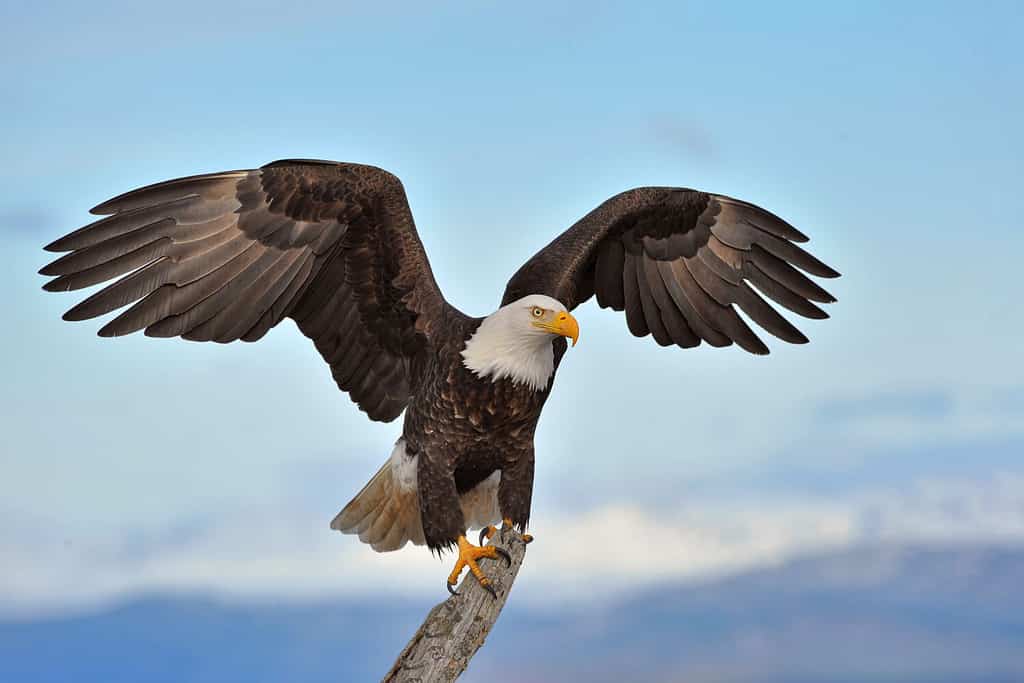
Only adult bald eagles sport white heads with yellow beaks and talons.
©FloridaStock/Shutterstock.com
Bald eagles are common year-round residents around Perry Lakes Park.
This area contains old growth floodplain combined with oxbow lakes, manmade ponds, and several miles of birdwatching trails. Of course, you could just hike for fun, but the area’s variety of species attracts all sorts of nature-loving people.
Mobile Bay
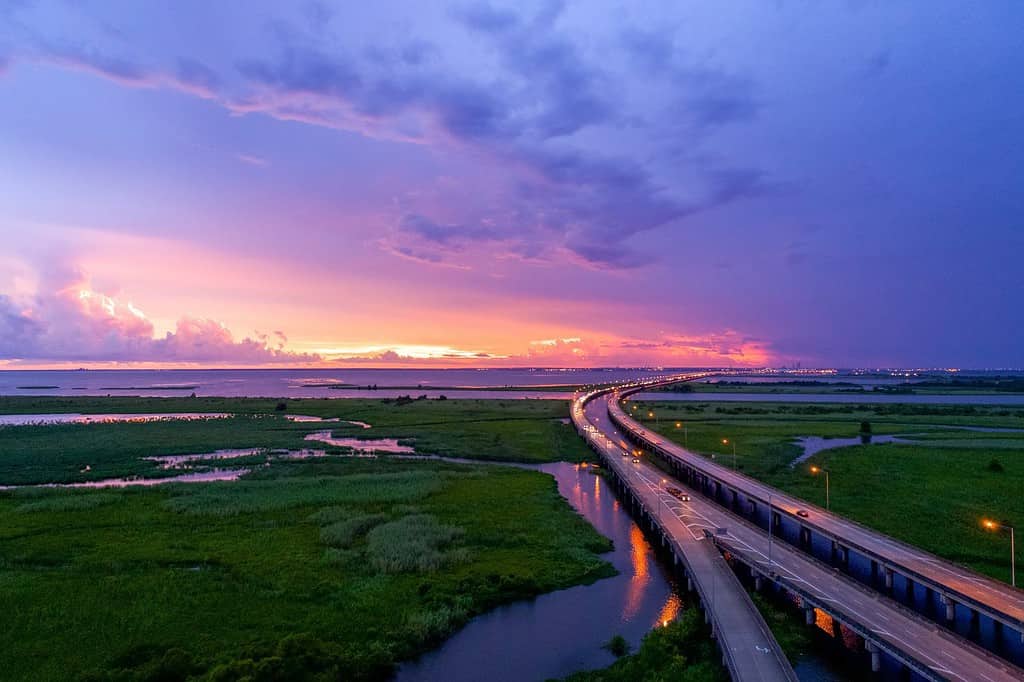
Mobile Bay’s extensive water ways make terrific fishing grounds for bald eagles.
©Cavan-Images/Shutterstock.com
According to iNaturalist.org, Mobile Bay has a strong concentration of bald eagles, with many sightings. It makes sense. The bay is full of fishing boats and trawlers coming and going from the Gulf of Mexico. The fishing alone makes Mobile Bay attractive to bald eagles. These birds must have wide open areas with water to fish. However, they’re opportunistic and also eat birds and mammals.
Choctaw National Wildlife Refuge
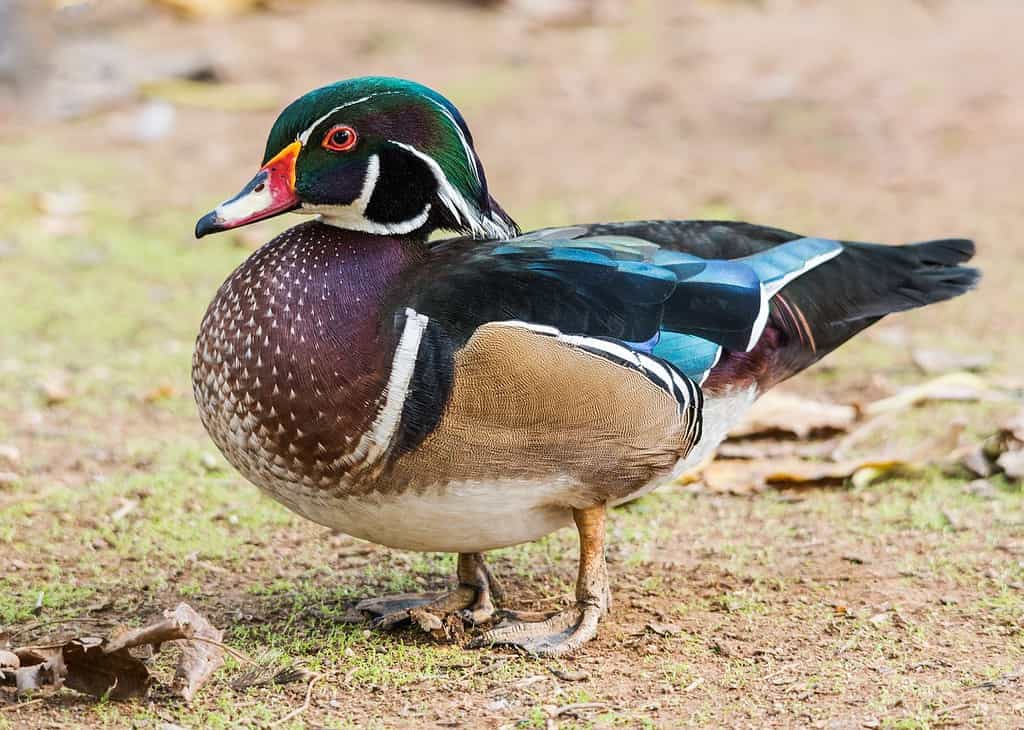
One of the primary purposes of the Choctaw National Wildlife Refuge is providing wood duck breeding areas.
©YK/Shutterstock.com
With more than 4,000 acres of sloughs, rivers, and bottomland hardwoods, Choctaw National Wildlife Refuge is an ideal habitat for bald eagles. Like most of Alabama, you can see them all year long, with more sightings between October and March.
Summary of the 7 Best Places and Times to See A Bald Eagle in Alabama
| Location | Time of Year |
|---|---|
| Tennessee River Valley | All year but mostly between October & March |
| Pickwick Lake | All year; more often from October to March |
| Lake Guntersville | All year; more sightings between October & March |
| Wheeler National Wildlife Refuge | Mostly October to March; year-round breeding pairs |
| Perry Lakes Park | October to March; rare during the summer |
| Mobile Bay | October to March; most are winter visitors |
| Choctaw National Wildlife Refuge | Mostly October to March; many year-round residents. |
The photo featured at the top of this post is © PHOTOOBJECT/Shutterstock.com
Thank you for reading! Have some feedback for us? Contact the AZ Animals editorial team.







